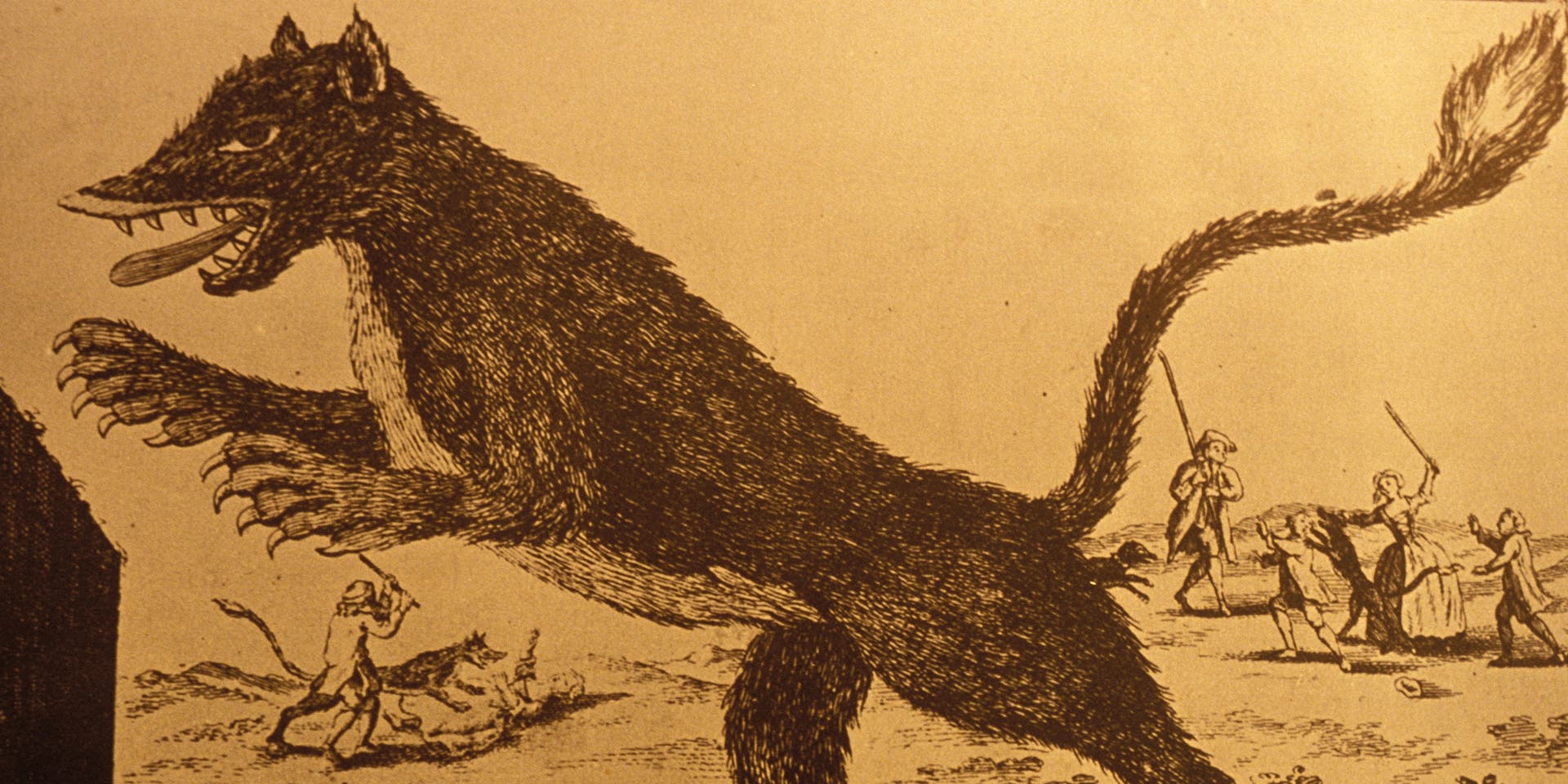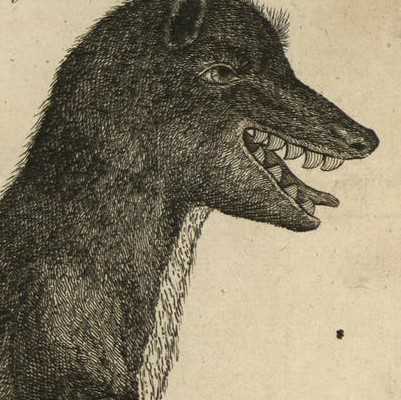It’s not super common to find a cryptid story that has a serious body count—usually cryptids just wander about scaring people, maybe eating a chicken or two. Not so with France’s La Bête du Gévaudan (translation for those who didn’t take high school French: the Beast of Gévaudan). Allegedly, the Beast (or, depending on who you ask, two beasts) killed over 100 people in the province of Gévaudan—what is now a south-central region of France—in the 1700s. A study from 1987 guesstimates 210 total attacks, with 49 injuries and 113 deaths, the majority of which involved half-eaten remains. The Beast was particularly fond of throats, it seems. It even decapitated a few people.
Okay, so what did La Bête du Gévaudan look like? Sort of a big cat about the size of a cow, if the illustrations can be believed. The Beast sported tawny/russet color fur with dark stripes, including one that ran down the length of its back and led to a very long tail. Big claws, big teeth. Oh, and did I mention that some reports say it could fly? I mean, no wings—but flying in that “can leap tall buildings in a single bound” kind of a way. It could also repel bullets and rise from the dead.

The first reported sighting happened in early summer 1764—a woman tending cows said her herd protected her. By late June, though, the Beast killed a 14 year old girl. Eventually the clergy decided the Beast was sent by God to punish the sinful and announced folks should pray the Beast away. Shockingly, this was not a particularly useful solution—the killing continued. King Louis XV eventually got involved in summer 1765, putting a bounty on the Beast’s head, then sending troops and professional hunters to track it down. In August of that year, one of the hunters killed a massive grey wolf, and everyone thought the Beast’s reign of terror was over. Au contraire, mon frere! The attacks started up again by November and continued through 1767… of course, Louis XV was bored by then, so the people of France got no official help, nor did the newspapers dare to report on attacks/deaths.
It wasn’t until June 1967 that a local hunter killed the Beast–then inconclusively identified as a large wolf or wolf-dog. That was the very last reported kill, so we have to assume it was—in fact—La Bête du Gévaudan. While the wolf/wolf-dog hypothesis is the one most people go with, there are other guesses that it was a lion or striped hyena that had escaped from a royal’s private zoo. Between Louis XV being too bored to deal with the deaths and a possible royal being the one directly to blame for having a dangerous pet (and not being a very good steward of his zoo), is it any wonder that the French Revolution started only twenty years later?
Of course, there are those who say the Beast was a werewolf—and if you ever watched Teen Wolf (the MTV drama, not the film), you may have heard La Bête du Gévaudan described as “history’s most vicious, most famous werewolf.” In season 5, there’s even a plot afoot to revive the Beast from the dead—which is ironic considering one of its powers was allegedly rising from the dead.
There was also a TV movie made in 2003 called The Beast of Gévaudan in which it is speculated that the murders were really committed by wolves in partnership with a cannibalistic, sexual predator human.
Interestingly, the earliest known printed version of Little Red Riding Hood, known as Le Petit Chaperon Rouge, dates to 17th century France. There are some people who say that reports of La Bête du Gévaudan were overblown–could wolf fever have derived from the publication of Le Petit Chaperon Rouge in France? Who knows? It’s certainly interesting to consider. Rest assured, though, the true origin of the Little Red Riding Hood story dates far earlier than that, possibly to 10th century France. No word on whether that version was born of a werewolf.

